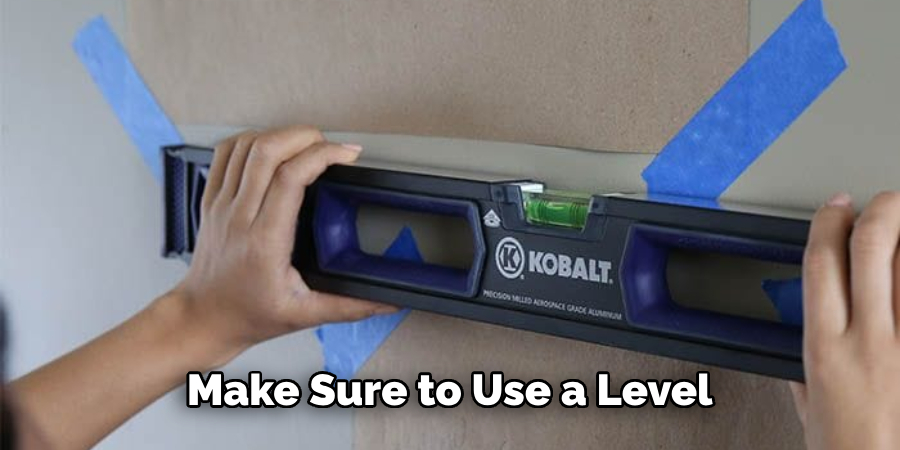Framing a wall for a bathtub and shower in your bathroom can add more privacy and increase the area available for bathing. It also allows you to customize the look of your bath area, from adding shelves to using different materials. Knowing how to frame a wall correctly is essential for creating an attractive and safe space.

One of the major advantages of framing a wall for a bathtub and shower is that it helps create an enclosure that can help prevent water damage in the rest of your home. Framing also helps support the weight of the tub or shower, preventing collapse or other structural issues.
Another advantage of framing walls for these areas is that it helps to provide insulation, keeping hot and cold water within the desired temperatures. In this blog post, You will learn how to frame a wall for a bathtub and shower.
Step by Step Processes for How to Frame a Wall for a Bathtub and Shower
Step 1: Inspect the Area
Before you frame the wall, inspect the area and make sure it is structurally sound. Make sure there are no issues that could cause problems during or after construction.
Step 2: Measure and Mark Outlines
Once you have determined that the area is suitable for framing a wall, measure out your desired space on the floor and mark it with painter’s tape. This will help you get a better idea of the size and shape of the wall that you need to build.
Step 3: Get Materials Ready
Gather all the needed materials for the job, including lumber, nails, screws, and other supplies. Make sure everything is ready before you start building so that there are no delays during construction. Cut your pieces of lumber into the desired shapes and sizes for the wall using a saw or power tool. Make sure all pieces are accurate before moving on to the next step.
Step 4: Assemble Wall Frame
Begin assembling the frame using nails or screws to connect each section. Make sure to use a level to make sure the frame is even and straight. Once the basic frame of the wall is in place, install wall studs at regular intervals. These will support the rest of the wall and help keep it sturdy.

Step 5: Secure the Bottom Plate
Drive nails or screws along the bottom plate of the frame to further secure it in place. This will provide additional stability for the wall when installed. Place drywall panels over the studs and secure them with screws or nails. Ensure all panels are even and flush before moving on to the next step.
Step 6: Apply Caulk and Tape
Apply caulk along the seams of the drywall and then add tape to keep it in place. Allow it to dry fully before continuing. Once the wall is completely framed and drywalled, install trim around the edges for a finished look. You can also hang any accessories on your shower or bathtub wall.
With the right materials and a few simple steps, framing a wall for a bathtub or shower is easy. Following these steps will help you get the job done quickly and efficiently, ensuring that your new wall will look great and be built to last.
Tips for How to Frame a Wall for a Bathtub and Shower
- Wear safety gear like goggles and gloves to protect your eyes and hands from dust, splinters, and other hazards.
- Properly measure the space to determine how much material is needed and ensure the framing plan fits existing plumbing arrangements.
- Secure the wall studs before beginning construction to ensure sturdy construction.
- Select a material designed to resist moisture, such as pressure-treated wood or drywall, with a waterproof membrane.
- Use lag screws and masonry anchors for added security when attaching the wall to an existing structure or floor joists.
- Install a vapor barrier between the studs and the finished walls to prevent water damage from condensation.
- Ensure that the framing is level and plumb before finishing the materials.
The most important thing to remember when framing a wall for a bathtub and shower is safety: use caution and take all necessary precautions to protect yourself from potential hazards.
How Can You Ensure That Your Wall Framing is Level and Secure?
When framing a wall for a bathtub and shower, it is important to ensure the frame is level and secure. To do this, you must use stud-finding equipment such as a laser level or stud finder to locate the center of your wall space.

Once you have identified the center point, you can measure both sides of your wall to ensure they are even and level. You may also find double-checking your measurements with a spirit level or plumb bob helpful.
Once you have determined the center point of your wall, mark the spot with a pencil and use a framing square to ensure that the corners are at 90-degree angles.
When confident about your layout, begin nailing the studs to form the frame. Ensure that all the nails are placed securely in the lumber and that there is no movement or shifting in any of the pieces you use.
Are There Any Special Considerations for Walls With Windows or Other Openings Near Them?
When framing a bathtub and shower wall, it is important to consider any windows or other openings near the area.
Openings such as these can interfere with the installation of studs and other components, so careful planning is necessary. If windows are present, install them before framing the wall to avoid any alignment issues. Additionally, you must consider the size and location of any vents or pipes near the wall. These can also interfere with framing if not factored into the plans beforehand.
Finally, it is important to ensure that all walls supporting the tub and shower are properly supported by a header at least 8 feet long. This will ensure that the structure is strong and stable.
By taking the time to consider any windows or other openings near the wall, as well as vents, pipes, and headers, you can ensure that your new shower or bathtub area is installed properly for safety and stability. You can create a lasting wall for years with careful planning and attention to detail.
What Common Mistakes to Avoid When Framing a Wall for a Bathtub and Shower?
When framing a wall for a bathtub and shower, several common mistakes should be avoided to ensure the safety and longevity of the structure. For instance, it is important to ensure that the studs used for the framing project are evenly spaced. Unevenly spaced studs can cause serious stress points within the walls, which could weaken their overall structure.

Additionally, when placing the studs within the wall frame, it is important to ensure they are securely fastened with nails or screws so they do not become unhinged over time.
When installing the bathtub and shower unit into the framed wall, many people often fail to secure it with screws or other fasteners properly.
This could cause the unit to become unstable over time, which may lead to potential safety hazards. Additionally, it is important to ensure that all the plumbing entering and leaving the bathtub or shower are securely sealed with caulk so that water does not leak from them.
Finally, when installing drywall panels over the framed wall for a bathtub and shower, it is important to ensure the panels are properly taped and finished.
What Maintenance is Required to Keep Your Framed Wall in Good Condition?
After framing the wall, it is important to maintain it to ensure its longevity and strength. To keep your framed wall looking good, there are a few things that you can do:
- Inspect the frame for any signs of damage or wear regularly. Pay special attention to areas around openings (such as doorways). Look for cracks, rotting, loose nails, and other signs of structural damage.
- Check the wall for water damage. Look for any staining or discoloration that may indicate a leak in your framing. If you find any evidence of moisture, contact a professional immediately to assess the damage and repair it accordingly.
- Repair any cracks or holes that appear in your framing. Cracks or holes can weaken the structural integrity of your wall and should be repaired quickly to prevent further damage.
- Treat any wood used in your framing with a protective coating or sealant, such as paint or varnish. Protecting your wood will help it last longer and provide extra protection from moisture damage.

Following these simple steps will help ensure that your framed wall for a bathtub and shower remains in good condition for years to come. Regular maintenance is key to preserving the integrity of your framing and can ultimately help you avoid costly repairs or replacements down the line.
Conclusion
In conclusion, framing a wall for a bathtub and shower is a challenging task. It requires careful measurements, good carpentry skills, knowledge of building codes, and the right tools. However, with proper planning and preparation, it can be done successfully.
The important thing is to take your time and ensure you understand all the steps involved in the process before starting any work. Following the steps outlined in this article, you should be able to frame a wall for your new bathtub and shower without any major problems.
This article has been beneficial for learning how to frame a wall for a bathtub and shower. Make Sure the preventive measures are followed chronologically.

